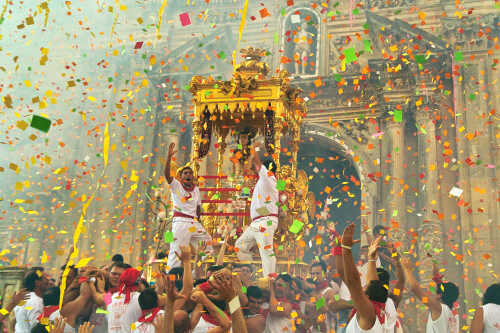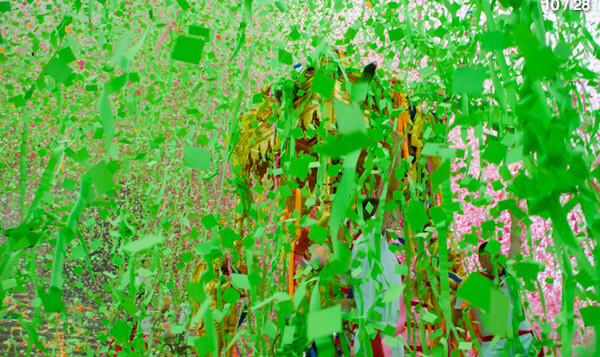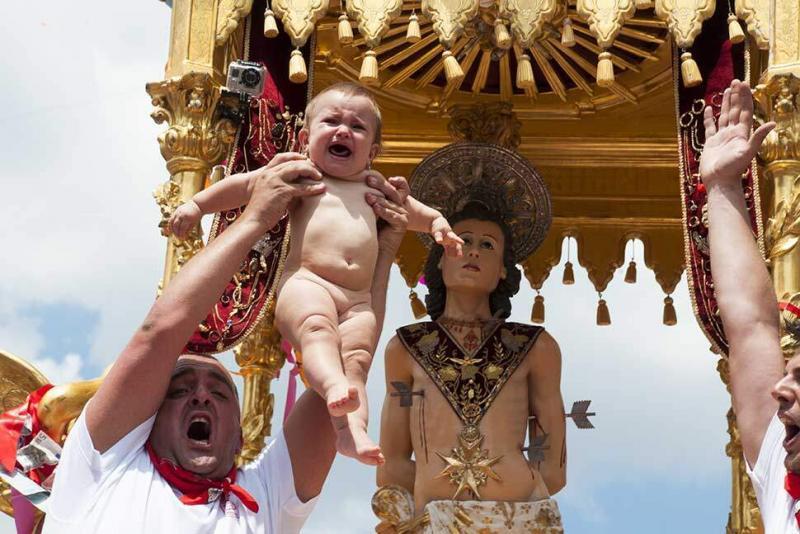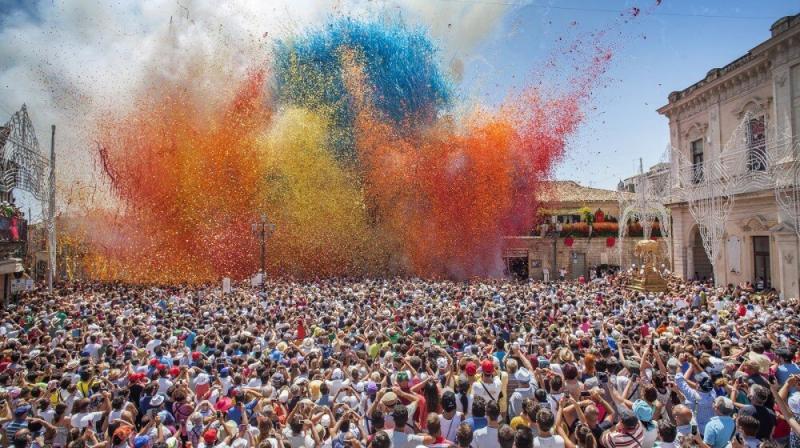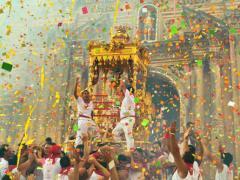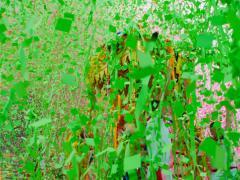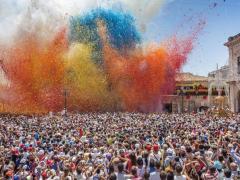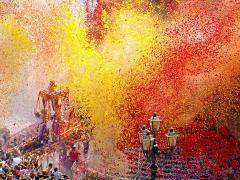Feast of San Sebastiano Martire
Street View (if present)
Description
Feast of San Sebastiano Martire - Palazzolo Acreide
The feast of San Sebastiano, celebrated by the Christian church on January 20, is repeated in Palazzolo Acreide on August 10. The rite supplanted the feast for the Madonna dell'Odigitria which was celebrated on that same date. The celebrations begin the previous evening, when the seventeenth-century fercolo of the saint, hidden from view of the faithful for the whole year, is revealed. At 13 pm, the fercolo and the relic, carried by devotees with bare shoulders, go out among the cheering crowd. In the town this festival is linked to a common and heartfelt act of suffering; the barefoot women follow the fercoli accompanied by the band and thousands of devotees and the bearers of vara, afflicted by the intense heat of a summer day, cross the streets of the town, leading the vare even for steep paths. The sacrifice for the Saint increases when the vare reach the ascent of Via Fiume Grande, where the great steepness of the alley induces the porters to move in a small space, to form a human chain. The saint, as repeatedly confirmed by religious rituals, is associated with saving and healing powers. In the church and along the way, numerous babies and children are, in fact, stripped and offered in the sense of protection and invocation of grace. Another evening procession closes the celebrations in honor of the saint, which actually last with moments of fun in the village for the whole week. (Text source: Sicily Region REI data sheet)
Photo: web
----------------
Technical sheet prepared by: Region of Sicily - Department of cultural heritage and Sicilian identity - CRicd: Regional center for inventory, cataloging and documentation and Sicilian regional film library
N. Prog. 86
Well: Feast of San Sebastiano Martire
Book: REI - Book of celebrations
Approval date: 13-04-2007
Category: Patronal feast
Province: Syracuse
Municipality: Palazzolo Acreide
Chronological News
The origins of the feast date back to 1603, to the celebration of the Madonna Odigitria, the day on which the feast in honor of the martyr St. Sebastian was made to coincide, set for Easter Tuesday. Until 1712 the celebration of the feast alternated between that day and the Sunday of the octave of Easter. Originally the festival lasted eight days, in which extraordinary celebrations took place, lights were set up, fire games were made, popular games in the square, horse races and any other leisure opportunities. As reported by Giuseppe Pitrè, Palazzolo Acreide was characterized by a strong diatribe for the primacy between San Sebastiano and San Paolo which lasted for a long time and was played within two districts, relying on the importance that the two Saints had played in internal history of the Christian religion. From the strongest and most fighter Paolo, to the meek and modest Sebastiano who let himself be pierced into his body.
Recurrence: Annual
Date: January 20; 10 August (summer procession)
Occasion: Celebrations in honor of the Patron Saint
Function: Celebratory / Devotional
Actors: Clergy, devout vara bearers, devout barefoot women
Participants: Band group, local community, devotees, tourists
Description
The feast of San Sebastiano, celebrated by the Christian church on January 20, is repeated in Palazzolo Acreide on August 10. The rite supplanted the feast for the Madonna dell'Odigitria which was celebrated on that same date. The celebrations begin the previous evening, when the seventeenth-century fercolo of the saint, hidden from view of the faithful for the whole year, is revealed. At 13 pm, the fercolo and the relic, carried by devotees with bare shoulders, go out among the cheering crowd. In the town this festival is linked to a common and heartfelt act of suffering; the barefoot women follow the fercoli accompanied by the band and thousands of devotees and the bearers of vara, afflicted by the intense heat of a summer day, cross the streets of the town, leading the vare even for steep paths. The sacrifice for the Saint increases when the vare reach the ascent of Via Fiume Grande, where the great steepness of the alley induces the porters to move in a small space, to form a human chain. The saint, as repeatedly confirmed by religious rituals, is associated with saving and healing powers. In the church and along the way, numerous babies and children are, in fact, stripped and offered in the sense of protection and invocation of grace. Another evening procession closes the celebrations in honor of the saint, which actually last with moments of fun in the village for the whole week.
REFERENCES
Pitre, Giuseppe. 1979. Patronal festivals in Sicily in Library of Sicilian Popular Traditions. Sala Bolognese: Ovens. v. XXI.
Cross, Maurice. 2004. The seasons of the sacred: almanac of Sicilian folk festivals. Palermo: Flaccovius.
Sitography
Footnotes
The Basilica of San Sebastiano di Palazzolo Acreide, in which the fercolo is preserved, is listed by Unesco as a World Heritage Site, among the late Baroque cities of the Val di Noto.
Card Author: Ester Oddo
Web photo
Go to Google Maps
Send a notice to the publisher
[contact-form-7 id="18385"]

